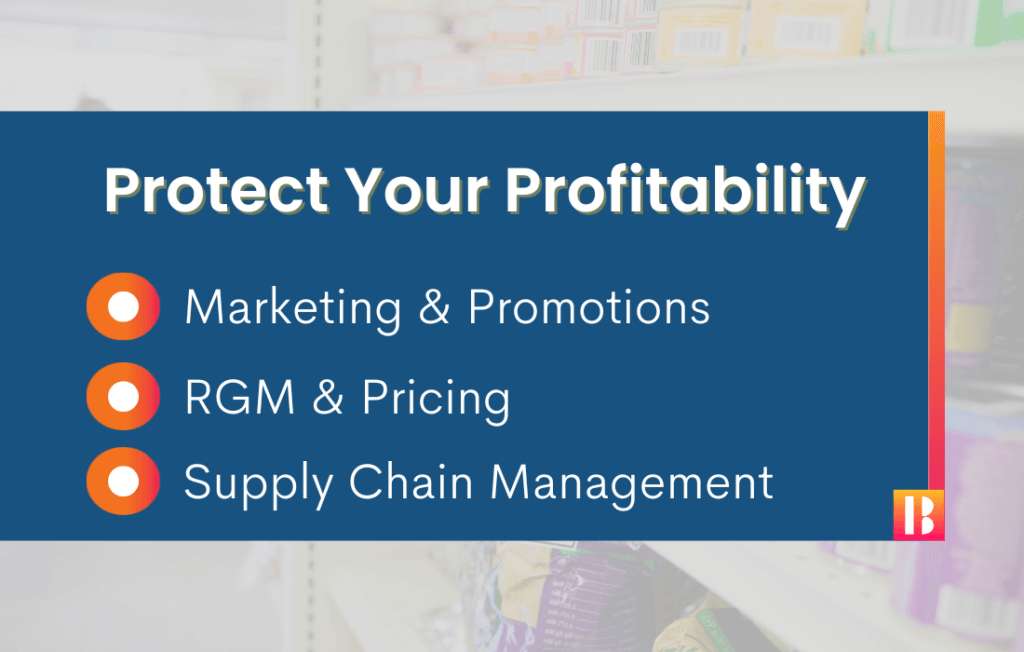E-Commerce Profitability Concern Has Brands Tightening Bottom Line
Reading Time: 7 Minutes
While the growth of 2020 and the optimistic outlook for 2021 has brands hungry for opportunity, questions about the profitability of ecommerce and omnichannel sales is leaving many searching for ways to control their bottom line.
According to a CPG ecommerce McKinsey study, when US CPG executives were polled during a June 2020 webinar, more than 1 in 4 respondents said that low profitability was their primary concern with regard to ecommerce. Yet ecommerce will almost certainly be one of the essential sources of growth for CPG companies in the foreseeable future.
Where Should Brands Start?
Brands that haven’t already adopted an e-commerce or a digital marketing strategy should formulate an approach to keep pace.
Data is the one integral component for brands looking to build an effective omnichannel strategy.
The truth is: Changes to pricing, promotion, assortment, and availability simply move faster in a digital world.
The inability to see key metrics like MAP compliance, out of stocks, search ranking, promotional execution, and competitive activity makes it challenging to make strategic decisions about which levers to pull or to know which investments to make.
Yes, visibility is an issue… and so is the inability to act in these areas. It causes bottom lines to leak unnecessarily.
We continue to see brands lose sales, incur retailer penalties, and struggle with over/under stocks because they don’t have a timely and accurate picture of their digital shelf.
According to the same McKinsey study, there are 3 areas where manufacturers can protect their profitability:
- Marketing & Promotions
- Revenue Growth Management and Pricing
- Supply Chain Management

To manage these areas strategically and effectively means gaining visibility and understanding their relationships.
For example:
- Can you forecast volume for anticipated pricing compliance issues?
- How often are your products out of stock when on promotion?
- How does search ranking changes impact sales volume?
- What pricing promotions help you regain your search position?
- To what extent are competitive promotions impacting your position and sales?
These are just some of the questions that you should assess, but these types of questions signal a change in the way that you talk about e-commerce and omnichannel strategy when you have the right insights.
“We Are Not There Yet” Doesn’t Work
Once upon a time, it was easy to brush off e-commerce as “just a small part of our business.” That’s no longer true.
As a result, you must take control of the areas where you have the most influence – pricing, promotion, assortment, and availability.
Start by learning about what’s happening with your products, retailers, and competitive brands.
Then, use historical data to identify opportunities and improve forecasting. The more breadth you have into your retailer ecosystem, the more likely you are to find opportunities to tighten bottom line erosion and improve profitability.
While doing so at large retailers like Amazon and Walmart is key, you should also identify and improve outcomes with retailers competing with Amazon and Walmart. That’s a recipe for mutually beneficial outcomes.
With worries about profit margin compression influenced by the unknowns of managing e-commerce and omnichannel selling, brand executives search for evidence that your company has a data-driven strategy to take advantage of increased demand and align with your company’s growth objectives.
Manufacturers with accurate and competitive insights can build a story that their team believes in and can execute an effective strategy that positions you to win today and grow in the future.
The Latest Insights – Straight to Your Inbox
Sign up for the Bungee Tech mailing list for actionable strategies, upcoming events, industry trends, and company news.














